Unbridled enthusiasm keeps miners happy
Under veneer of optimism, many explorers, most producers at AME Roundup expect challenging times into continue in 2019 North of 60 Mining News – March 1, 2019
Last updated 9/25/2020 at 2:16pm
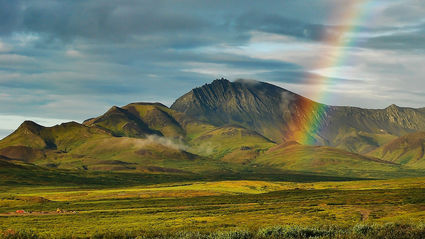
Solitario Zinc Corp.
A rainbow touches down at Lik, an advanced stage zinc-lead-silver project in the Red Dog District being explored under a 50-50 partnership between Teck Resources and Solitario Zinc.
Those of you that attended the recent Cordilleran Roundup Convention in Vancouver can attest to the exuberant, upbeat atmosphere that pervaded the conference and was very much in evidence at the standing-room only festivities at our annual self-hosted Alaska Night meet and greet.
But digging down under this veneer of optimism, many of the junior explorers and most of the producers admitted to their expectations of challenging times in 2019.
Putting words to this apparent dichotomy, one exploration geologist asked after the convention "Why was everyone so happy?!"
That is a very good question. Perhaps it is because over the last quarter of 2018 gold was up over 20 percent while both the Nasdaq index and the great pretender to gold's throne, Bitcoin, were down almost 60 percent. That certainly put a smile on my face but likely was not an industry-wide happiness driver.
I suspect the fervor on display at Cordilleran Roundup stems from something altogether more basic, something that is not driven by mile-wide, inch-deep news bites or the ups and downs of an industry that is constantly up and down.
I think the passion in evidence at Roundup is based on a simple fact: the mining industry is not built, nor does it maintain itself, on pessimism. In the end, the unbridled, irrepressible enthusiasm of the mining industry can be distilled to this: we all know optimists who have succeeded and optimists who have failed. But few of us have ever met a pessimist who succeeded.
WESTERN ALASKA
Teck Resources Limited and partner NANA Regional Corp. announced fourth quarter and year-end 2018 results from its Red Dog mine. During the final three months of 2018, zinc and lead production increased by 13 percent and 6 percent, respectively, due to higher than planned throughput at the mill. In the fourth quarter the mine produced 160,100 metric tons of zinc in concentrate and for the year the mine produced 583,200 metric tons of zinc in concentrate. Zinc ore grades for the year were up slightly to 15.7 percent and mill recoveries were up slightly at 83.9 percent. The mine also produced 26,500 metric tons of lead in concentrate during the fourth quarter and 98,400 metric tons of lead in concentrate for the year. Lead ore grade for the year decreased to 4.4 percent while mill recoveries decreased to 50.2 percent. Gross operating profit for the fourth quarter was $256 million, compared with $311 million in 2017. Gross operating profit for the year was $864 million, compared with $874 million in 2017. Mill throughput for 2018 was up significantly to 4,429,000 metric tons compared to 4,270,000 metric tons in 2017. Work continues on the $110 million mill upgrade project, which is progressing as planned. Construction started in late 2017 and is expected to increase average mill throughput by about 15 percent over the remaining mine life helping to offset lower grades and harder ore. Planned start-up for the mill upgrade is the first quarter of 2020. The mine's production of contained metal in 2018 is expected to be in the range of 500,000 to 520,000 metric tons of zinc and 85,000 to 100,000 metric tons of lead.
Solitario Zinc Corp. announced plans for its Lik zinc project, a joint ventured with Teck American Inc. The company recently received results for the 2018 exploration program and planning is nearly complete for a jointly funded 2019 exploration program. The 2018 exploration program consisted of geologic mapping and geochemical sampling over the deposit and potential extensions to the northeast, a ground gravity geophysical survey over prospective stratigraphy, mainly on the eastern half of the property and, recovery of nineteen previously drilled core holes that will be relogged in 2019. The company also reported that about 1,500 meters north-northeast of Lik, reconnaissance geologic mapping and geochemical sampling identified a geochemically anomalous area hosted in pyritic shales within stratigraphic rock units that host Red Dog district mineralization. Although a gravity high is coincident with this area, the high could also be associated with overlying carbonate rocks or complicated by topographic effects. This potential new target, informally called "North Area Prospect," will be one of the primary work areas for 2019. The objectives for the 2019 exploration program include follow-up geologic mapping and geochemical sampling in the newly identified North Area prospect, multi-element continuous scan of historic core with state-of-the-art X-ray fluorescence scanning technology to further define the deposit's geochemical signature and characterize its distal geochemical halo to potentially vector in on new drill targets, and selective relogging of historic drill core from the project. The 2019 exploration program will be jointly funded by the partners and managed by Teck.
Novagold Resources Inc. released its year-end financial results and project update for its flagship Donlin gold project, owned 50 percent with Barrick Gold Corp. Major milestones for 2018 include the Notice of Availability for the Donlin Gold final Environmental Impact Statement (EIS) that was published in the Federal Register. On Aug. 13, the Corps and the Bureau of Land Management issued a joint federal Record of Decision for the project, along with a permit from the Corps of Engineers under the Clean Water Act (CWA) Section 404 and Section 10 of the Rivers and Harbors Act. At the same time, the BLM issued the Offer to Lease for the Right-of-Way for those portions of the natural gas pipeline that would cross federal lands. The Pipeline and Hazardous Materials Safety Administration issued a special permit for the natural gas pipeline in June. Several major Alaska state permits for the project were issued or advanced during the year. These include the Clean Water Act Section 401 Certificate of Reasonable Assurance issued in August, indicating that the Clean Water Act Section 404/10 federal permit complies with Alaska's water quality standards, issuance of the Alaska Pollutant Discharge Elimination System water discharge permit issued in May, issuance of the Alaska Department of Fish and Game Title 16 Fish Habitat permits for the mine area and transportation corridor in August, and in October the Alaska Department of Environmental Conservation approved an extension of the date by which construction of the Donlin Gold project must begin to June 30, 2020, as authorized by the Prevention of Significant Deterioration air quality permit. The company also continued a wide-ranging community outreach program on conjunction with mineral estate owner Calista Corp. and surface estate owner The Kuskokwim Corporation. These efforts included village meetings held throughout the Yukon-Kuskokwim (Y-K) region to highlight the benefits of the project and respond to questions. The company also continued to support and fund educational opportunities for hundreds of students in the Y-K region where the project is located. The company also launched and funded the successful Green Star waste removal program working with six middle Kuskokwim villages to remove household hazardous waste via barges. The partners anticipate spending $26 million in 2018 to advance the project.
On Feb. 20, the U.S. Army Corps of Engineers released its Draft Environmental Impact Statement (DEIS) for North Dynasty's Pebble copper-gold-molybdenum project. The project would include development of the open-pit mine, with associated infrastructure to include a 270-megawatt power generating plant. A 188-mile natural gas pipeline from the Kenai Peninsula across Cook Inlet to the mine site is proposed as the energy source for the mine. The transportation corridor includes mine and port access roads, an 18-mile crossing of Iliamna Lake, and an Amakdedori port facility on the western shore of Cook Inlet. This massive document covers all aspects of the possible environmental impacts for the project and covers a number of alternative development proposals for mine site impacts, transportation and port site impacts and natural gas pipeline impacts for the project. The full document can be found at https://pebbleprojecteis.com/. Written comments must be submitted by May 31. Nine public hearings are planned during the 90-day comment period, including meeting at Naknek, Kokhanok, Newhalen, Igiugig, New Stuyahok, Nondalton, Dillingham, Homer and Anchorage. Times and locations for these public hearings can be found at https://pebbleprojecteis.com/publichearings.
TNR Gold Corp. released an update on its Shotgun gold project. The company indicated that it is actively introducing the project to interested parties with the view toward negotiating a joint venture to advance exploration and development of the project. The main target at the project is an intrusion-related gold system within the western extent of the Tintina Gold Belt. The Shotgun Ridge gold mineralization is associated with granitic porphyries intruding Cretaceous sedimentary rocks of the Kuskokwim Group. Mineralization in the area was emplaced within a compressional environment evidenced by northeast oriented right lateral strike-slip faulting and open folding with northwest oriented axes. At the Shotgun Ridge prospect, northwest oriented dilatational jogs or relay zones host mineralized quartz breccias. Published inferred resources for the project include 20,734,313 metric tons grading 1.06 grams of gold per metric ton for a total of 705,960 ounces gold using a 0.5 grams of gold per metric ton cut-off grade.
INTERIOR ALASKA
Kinross Gold announced fourth quarter and year-end 2018 results from its Fort Knox mine. The mine produced 255,569 ounces of gold at a cost of $837 per ounce versus 381,115 ounces of gold at a cost of $628 per ounce in 2017. During the fourth quarter of 2018 the mill processed 2,856,000 metric tons of ore grading 0.44 grams of gold per metric ton. Mill recoveries were 83 percent for the quarter. During this period, the mine placed 2,927,000 metric tons of ore grading 0.19 grams of gold per metric ton on the valley leach facility. The full-year production decreased year-over-year largely due to a decrease in grades and metric tons of ore processed in the mill and placed on the heap leach pads. The pit wall failure in early 2018 also limited access to higher-grade ore and higher than average rainfall in the second half of 2018 affected geotechnical stability. The company also reported that work on the Gilmore project is progressing on schedule and on budget, with initial ore extraction expected in early 2020. Construction of the heap leach will continue during the 2019 and 2020 construction seasons. Expansion of the dewatering system will continue throughout 2019 in anticipation of stripping that is expected to commence in the third quarter of 2019. The mine also announced year-end revised resources, including proven and probable reserves of 267,573,000 metric tons grading 0.40 grams of gold per metric ton (3,036,000 ounces). Measured and indicated resources at the mine were 155,679,000 metric tons grading 0.40 grams of gold per metric ton (1,797,000 ounces). Inferred mineral resources were 88,652,000 metric tons grading 0.30 grams of gold per metric ton (808,000 ounces). On the exploration front, the company indicated that it will continue to explore the western extension of Gilmore area in 2019 as well as continue exploration at the East Wall target. Brownfield targets around the mine site will also be tested in 2019, including Gil-Sourdough deposit, a satellite deposit near the main Fort Knox deposit. A total of approximately 11,000 meters of exploration drilling was completed during 2018. At the East Wall, drilling has shown upside in both grade and depth at the contact along the southern flank. However, results were generally neutral as new drilling also indicated that the granite is deeper and lower-grade at the northern edge. Significant intercepts included 34 meters grading 2.19 grams of gold per metric ton at East Wall and 56 meters grading 1.6 grams of gold per metric ton at Phase 10. Exploration also selected samples for assay from dewatering and geotechnical drilling that was ongoing throughout 2018. These holes were primarily along the western edge of Fort Knox. Geological and assay data from these drill holes further refined the shape of the granite-schist contact and extended ore-shears to the west of the current reserve pit. Re-logging and reinterpretation of the Gil-Sourdough deposit was carried out during the year in preparation for a 2019 drilling program. Re-logging identified a northeast striking, steeply dipping fault system in the heart of the North Gil ore body which the company plans to test in 2019. Drilling will continue in 2019 to probe mineralization at the East Wall with a goal of converting and upgrading resources, as well as exploring the Gil-Sourdough gold deposit.
Northern Star Resources Ltd. announced half-year 2018 production figures and a serious wad of exploration results from its Pogo gold mine operations. For the second half of 2018 the mine produced 104,580 ounces of gold at an average mine grade of 9.6 grams of gold per metric ton. All-in sustaining cost of production was $1,130 per ounce. The mine processed 399,816 metric tons of ore with recoveries averaging 89 percent. The mine also reported the production 59,219 ounces of gold at a grade of 8.1 grams of gold per metric ton during the final three months of 2018. Costs averaged $1,208 per metric ton. The fourth quarter saw mined output increase by 22 percent and milled output increase by 33 percent. The planned lower grades mined are a function of new mining methods, increased mine development and ore sequencing. The mine's costs are expected to fall as benefits flow from the switch to long-hole stoping, owner mining, increased mechanization and mining of higher-grades. The mine is forecast to produce 250,000-260,000 ounces of gold in 2019 at an all-in sustaining cost of $880 to $1,025 per ounce. The company also released a comprehensive 42-page exploration summary for the Pogo mine, a virtual smorgasbord of exploration and mine development information that was devoured by everyone interested in Alaskan mining activity. Cherry picking a few items from the report includes drill results from the Liese vein system where most past production has been sourced. These results include 5.8 meters grading 59.7 g/t gold, 22.5 meters grading 33.8 g/t gold, 6.4 meters grading 42.7 g/t gold and 2.9 meters grading 72.9 g/t gold. Drilling has significantly extended the known extent of the South Pogo veins with drill results including 8.7 meters grading 17.5 g/t gold, 6.7 meters grading 28.6 g/t gold and 2.8 meters grading 30 g/t gold. Similar expansion was seen at the X-vein-North Zone area with drill results including four meters grading 40.7 g/t gold, 7.8 meters grading 18 g/t gold and 4.1 meters grading 23.9 g/t gold. Initial extension drilling in the Fun Zone returned 4.9 meters grading 14.8 g/t gold, 11.8 meters grading 16.9 g/t gold and 2.4 meters grading 19.8 g/t gold. The company also indicated that the newly discovered Central Lodes had been defined over a strike length of about 650 meters and a down-plunge extent of about 500 meters. This target is only 800 meters from existing infrastructure. The vein array remains open in all directions with an initial resource expected by mid-2019. Significant intersections from Central Lodes surface drilling include two meters grading 175.3 g/t gold from 410.4 meters depth, 3.6 meters grading 50.6 g/t gold from 260.5 meters depth, 14.3 meters grading 6.1 g/t gold from 453.3 meters depth, two meters grading 35.1 g/t gold from 257.7 meters depth, and 3.4 meters grading 26.8 g/t gold from 37.3 meters depth. As a result of planned decrease in average head-grade, the company indicated that historic drilling identified more than 2,500 significant unmined intersections, defined as at least two meters wide at four g/t gold, that are outside of the current resource base. And no, I won't list all 2,500 of those intervals, but how does 12 meters grading 51.5 g/t gold, 7.6 meters grading 66.2 g/t gold, 2.3 meters grading 171.7 g/t gold, 5.9 meters grading 65.5 g/t gold and 4.7 meters grading 50.9 g/t gold grab you!? The company indicated that during 2018 it completed 133,136 meters of drilling in 693 diamond drill holes. Underground drilling focused on resource conversion and extension within the mine while surface drilling concentrated around the new Central lodes discovery, located about 800 meters northwest of current underground development. The 47 holes drilled at Central Lodes outlined at least five individual stacked vein structures interpreted as a "Liese-style" faulted vein offset located northwest of the main system. Mineralization is similar in nature to the currently-mined Liese Veins. Individual quartz veins exhibit both laminated and granoblastic textures with a sulfide assemblage of predominantly pyrite, arsenopyrite and pyrrhotite typically making up less than 3 percent of the mineralized intersections. A specific unit of highly altered granitic gneiss both influences the location of mineralized shoots within the vein structures and contains gold-bearing sulfide veinlets. At the North Zone (NZ) and X-Vein (XV) systems 92 holes were drilled to define and extend mineralization. The NZ-XV vein systems are atypical in that they dip steeply east and strike north-south and are cut by a series of graphitic shears. Quartz vein textures vary from laminated to massive, with fracture fill pyrite, pyrrhotite and arsenopyrite. The company commenced long-hole open stoping production in the NZ area. Access to the South Pogo vein system was achieved during 2018 via the 1706 exploration drive and L2X decline with mining of development ore commencing in mid-2018. The South Pogo vein system is interpreted to be a southern, offset block of the main Liese system. The main structural trends are consistent with the Liese zone with two coherent stacked quartz vein structures identified to date, however drilling indicates the presence of additional structures that require further testing. Mineralization within the structural zone varies from coherent laminated quartz veins, sulfidic silicified zones, small scale quartz-sulfide stockwork type veins and disseminated sulfides within silica-sericite alteration. The Fun Zone is a "Liese-style" vein system located above the Liese 1 block in the northwest portion of the mine operations. First ore production from the Fun Zone veins commenced in 2018. For the coming year, the company plans to utilize eight core rigs underground to complete 97,000 meters of drilling during the first half of 2019. In addition, an underground reverse circulation rig has been sourced to fast-track resource definition programs. Surface drilling activities during the first half of 2019 will focus on infill and extensional drilling of the Central Vein system with surface rigs returning to full production from mid-January. Other than that, not much to see here, move along!
Contango ORE Inc. announced that joint venture partner Royal Gold, Inc. has retained Scotia Capital Inc. to conduct a joint process for the direct or indirect sale of the partners' Peak gold-silver-copper project near Tok, Alaska. As previously announced, Contango has retained Petrie Partners, LLC and Cantor Fitzgerald and Co. to advise Contango on its strategic options. The company indicated that the decision to offer the project for acquisition came after encouraging results from its recent preliminary economic assessment and the conviction that there is significant exploration upside remaining on the project that is outside the Main Peak and North Peak resource areas.
ALASKA RANGE
White Rock Minerals Ltd. announced an update on its 117,000-acre Red Mountain volcanogenic massive sulfide project in the eastern Bonnifield District, a joint venture with Sandfire Resources NL. The company indicated it is designing and budgeting a program of field mapping, rock and soil sampling, geophysics and diamond drilling at the project. Details will be released in the near future.
PolarX Ltd. announced final assays from its 2018 program at its Alaska Range project. Significant drilling results included 16.7 meters grading 1.2 percent copper and 0.5 grams of gold per metric ton from 261.4m in hole ZX18032, including 2.1 meters grading 1.1 percent copper and 1.5 g/t gold from 264.1 meters, 2.4 meters grading 2.7 percent copper and 1.1 g/t gold from 276.6 meters, and 2.1 meters grading 3.1 percent copper and 0.8 g/t gold from 288.1 meters. These intercepts are located in the Main Skarn zone but outside of the current resource base. Mineralization remains open to expansion at depth. Lower grade mineralization was intersected in holes ZX‐18026 and ZX‐18029 at the western end of the known resource. The mineralization trend identified in historical drilling and in aeromagnetic data suggest mineralization is fault offset to the north but continues to the west of the fault into areas that have not been drilled to date.
Nova Minerals Limited announced an update on its 2019 plans for the Estelle gold-copper project in the southern Alaska Range. Primary focus will be given to the Oxide prospect where geological mapping and rock sampling was conducted in 2018 and where drilling was conducted last in 2010. The key feature of the Oxide North and South zones is that they consist of broad envelopes containing argillic-phyllic to propylitic hydrothermal alteration. Rock samples from these alteration envelopes contains moderate (approximately 1 percent) arsenopyrite plus or minus pyrite, pyrrhotite, chalcopyrite and tetrahedrite that returned moderate grades of up to 1.04 grams of gold per metric ton and averaging grade 0.183 g/t gold. Oxide North and Oxide South alteration envelopes measures 1,300 to 1,600 meters along strike and have widths of between 550 to 600 meters. The first phase of 2019 field work will consist of at least 50 line-kilometers of induced polarization geophysical surveys followed by an initial 2,500 meters of core drilling with a second round of 2,500 meters if positive initial drill results are obtained. In addition, geologic mapping and sampling the RPM and Shoeshine occurrences will be conducted and prospecting and sampling will be conducted on the other 15 or more occurrences contained within the claim block.
NORTHERN ALASKA
Trilogy Metals Inc. and funding partner South32 Limited announced 2019 budgets for their Upper Kobuk Mineral project, a business relationship owned and controlled by Trilogy and NANA Regional Corporation Inc. The budgets include $16.2 million for on-going exploration and development at the Arctic volcanogenic massive sulfide deposit and Bornite copper-cobalt deposit plus an additional $2 million for regional exploration of the 75-mile long Ambler Schist belt. The budget includes $9.2 million for the Bornite project focused on additional exploration drilling to include both infill and expansion drilling of the known deposit and $7 million for the Arctic project focused on feasibility level engineering and environmental work to complete a feasibility study in the first half of 2020 and prepare the project for permitting later in 2019. The $2 million district exploration program will include a VTEM electromagnetic airborne geophysical survey along the entire Ambler Schist belt. Follow-up ZTEM, a deeper-looking system, may be flown in selected areas. High priority targets will be evaluated for follow-up drilling. The company also indicated that the Bureau of Land Management (BLM) plans to complete a Draft Environmental Impact Statement (EIS) on the Ambler Access Road by the summer and a Final EIS by the end of the year.
SOUTHEAST ALASKA
Hecla Mining announced year end 2018 production results from the Greens Creek mine on Admiralty Island. The total cash cost per ounce of silver produced for the year was $5.58 per ounce versus $5.76 per ounce in 2017. The average grade of ore mined during 2018 was 12.16 ounces of silver per short ton, down slightly from the average grade of 12.88 oz/t in 2017. For the year, the mine produced 7,953,003 oz of silver, 51,593 oz of gold, 18,960 tons of lead and 55,350 tons of zinc. Lower annual silver production, when compared to 2017, was due to the expected lower grades. The mill operated at an average of 2,316 tons per day in 2018, a mine record for throughput. The mine is forecasting 2019 production of 7.7 million oz of silver and 50,000 oz of gold at a cash cost of $5.50 per oz of silver-equivalent. The mine also announced updated reserves and resources, including proven and probable reserves are 9,277,000 tons grading 11.5 oz/t silver, 0.09 oz/t gold, 2.8 percent lead and 7.6 percent zinc. Measured and indicated resources are 7,467,000 tons grading 13 oz silver, 0.1 oz/t gold, 3.1 percent lead and 8.2 percent zinc. Inferred resources are 2,470,000 tons grading 14.6 oz/t silver, 0.09 oz/t gold, 3 percent lead and 7.3 percent zinc. At current production rates, the company estimates mine life at about 11 years. I know we are not supposed to add up all the ounces in all categories, but I will save you the trouble of ignoring this dictum and tell you that total silver resources at the mine are just over 240 million ounces. And this is after production of over 228 million ounces of silver through the end of 2018. One more factoid: according to DGGS Special Report 44, in 1989 Greens Creek had resources of 3,600,000 tons grading 25.3 ounces of silver per ton, 0.16 ounces of gold per ton, 4.1 percent lead and 10.8 percent zinc, containing a little over 91 million ounces of silver. Do the math: current resources plus past production are over 5 times the size of the original resource and they are adding more ounces every day. A deep and reverent bow is due everyone involved with the Greens Creek mine, past and present!
Not to be outdone by the boys in the mill, Hecla Mining also announced year end 2018 exploration results from the Greens Creek mine. Underground drilling continues to expand high-grade, near-surface resources at the Upper Plate and East Ore zones and add to mineralized trends along the Deep 200 South, Southwest Bench and Lower Southwest zones. Drilling of the Deep 200 South Zone confirmed three flat-lying, high-grade lenses that are folded to the west and enabling portions of bench mineralization to be upgraded to an indicated resource category. Recent intersections include 180.4 oz/t silver, 0.36 oz/t gold, 14 percent zinc and 7.2 percent lead over 5.3 feet and 81.5 oz/t silver, 0.40 oz/t gold, 1.1 percent zinc and 0.6 lead over five feet. Near the mine portal elevation, drilling of the Upper Plate Zone to the northwest has defined at least two flat-lying zones that are folded to the east. In combination with surface drilling earlier in the year, this resource expanded further to the west and north. Definition drilling results indicate a thickening of the upper and middle mineralization horizons toward the Southwest D Fault. Recent results include 11.4 oz/t silver, 1.04 oz/t gold, 2.2 percent zinc and 1.6 percent lead over 14.2 feet; and 34.2 oz/t silver, 0.01 oz/t gold, 2.5 percent zinc and 1.5 percent lead over 4.9 feet. In the East Ore Zone, intersections from drilling at the north end, including 38.5 oz/t silver, 0.11 oz/t gold, 7.4 percent zinc and 3.5 percent lead over 6.1 feet; and 29.5 oz/t silver, 0.11 oz/t gold, 3.6 percent zinc and 1.3 percent lead over 8.4 feet, confirm previously modeled resource estimates, particularly at lower and higher elevations. Drilling has expanded this northern portion of the zone by over 150 feet to depth. The focus of the first quarter in 2019 underground drilling will be on the Lower Southwest, Deep 200 South, 9A, and East Ore zones. Later in 2019 additional drilling will focus on the Northwest West and Upper Plate zones.
Coeur Mining Inc. announced year-end 2018 production and resources from its Kensington mine. The mine produced 105,570 ounces gold during the year versus 115,094 in 2017. This decrease was offset by higher grade production from the Jualin deposit in the fourth quarter. For 2018, the operation milled 641,058 short tons of ore grading 0.18 ounces of gold per ton with a gold recovery of 92.3 percent. Adjusted cash cost for the year was $1,050 per oz. Production in 2019 is forecast at 117,000 to 130,000 oz of gold at a cost of $950 to $1,050 per oz. Year-end reserves and resources at Kensington included 2,586,000 tons of proven and probable resources grading 0.213 oz/t (552,000 oz) gold; 2,681,000 tons of measured and indicated resources grading 0.25 oz/t (671,000 oz) gold; and 710,000 tons of inferred resources of grading 0.227 oz/t (161,000 oz) gold. Again, breaking the rules so you don't have to, Kensington has produced 920,192 oz of gold since start-up in 2010, bringing total production plus current resources to 2,274,192 oz.
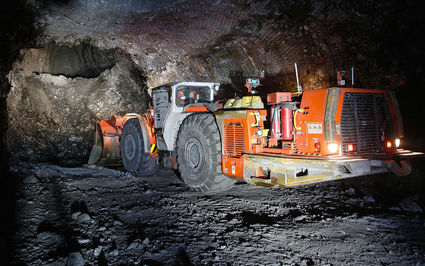
Hecla Mining Company
In addition to replacing the 845,398 tons of ore mined at Greens Creek last year, Hecla's exploration program substantially expanded the reserves and resources at this high-grade silver mine in Southeast Alaska.
Grande Portage Resources Ltd. announced final 2018 drilling results and findings from a Lidar survey at its Herbert gold project near Juneau. The new assay results are from M Pad north of the Goat vein. Holes 18M-3 through 11 all intersected the Goat Vein which showed widths of up to about 15 meters of shearing with associated hydrothermal alteration, variable quartz, with gold values slightly less than the cutoff grade used in the resource calculations. Significant results from 18M-7 included 1.81 meters of 3.44 grams of gold per metric ton in the Goat Vein. The hanging wall splay of the Goat Vein in 18M-8 showed a weighted average value of 4.39 g/t gold over 4.07 meters, which includes 0.67 meters of 25.7 g/t gold. The main Goat Vein returned one meter of 2.01 g/t gold. Hole 18M-8 also intersected the North Split of Main Vein, which returned 6.50 g/t gold over 1.6 meters approximately 100 meters below the deepest previous intersection of this vein. The Main Vein itself returned 0.56 meters of 3.04 g/t gold. Hole 18M-9 returned 1.68 meters of 6.03 g/t gold. The LiDAR survey clearly delineated 16 additional parallel and sub-parallel structures that warrant future exploration and development. To date, prospecting, mapping and drilling has tested less than 1,000 meters of the 4,600 meter gold trend and this survey extends the prospective structures at least 1,400 meters to the southeast and 400 meters to the northwest.
Curtis J. Freeman CPG #6901
Avalon Development Corp.
P.O. Box 80268
Fairbanks, AK 99708
Phone: 907-457-5159, Fax 907-455-8069
Email: [email protected]
Website: http://www.avalonalaska.com


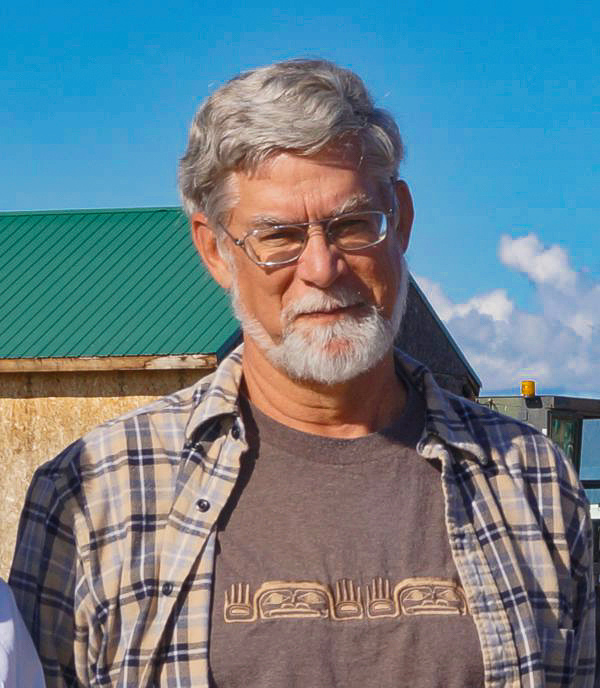

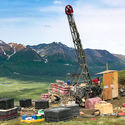
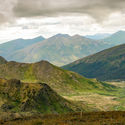

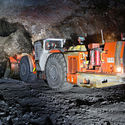
















Reader Comments(0)